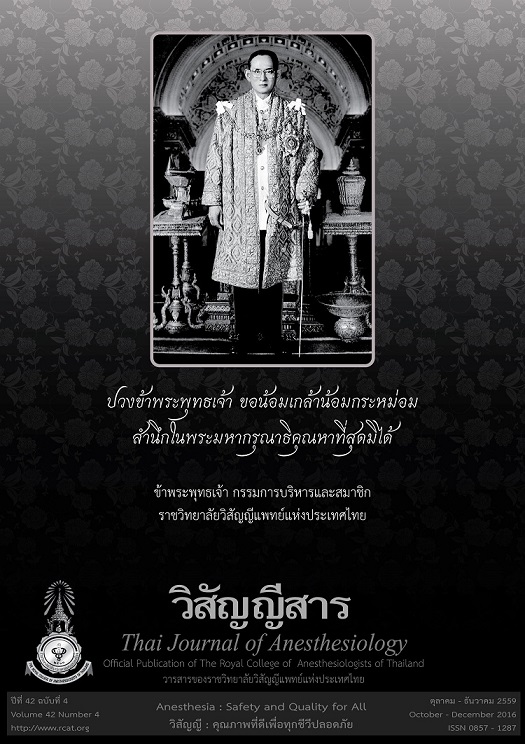Hemodynamic responses to endotracheal intubation comparing Macintosh direct laryngoscope, Glidescope and Bonfils fiberscope
Main Article Content
Abstract
Background: Hemodynamic responses during laryngoscopy and intubation are concerned as
postoperative cardiovascular events. Our review literatures show that Glidescope and Bonfils
fiberscope assisted intubation affect cardiovascular response less than conventional direct laryngoscope technique.
Objective: The aim of this study was to compare the hemodynamic changes during Macintosh
direct laryngoscope, Glidescope and Bonfils fiberscope.
Methods: A prospective, randomized controlled trial was conducted in 120 female patients,
scheduled for gynecologic surgery under general anesthesia. Patients were randomly allocated into three groups: Macintosh group, Glidescope group and Bonfils group. Hemodynamic values (heart rate, systolic blood pressure, diastolic blood pressure, mean arterial blood pressure) before induction, after induction, at the time of intubation, at every minute for five minutes after intubation and time to intubation were recorded.
Results: Patients demographic data was similar among three groups. Time to intubation was
significantly longer in Bonfils and Glidescope groups than in Macintosh group (p < 0.001). No significant hemodynamic changes after intubation among three groups.
Conclusion: Hemodynamic responses to endotracheal intubation comparing Macintosh direct
laryngoscope, Glidescope and Bonfils fiberscope were not different in ASA I-II gynecologic patients.


